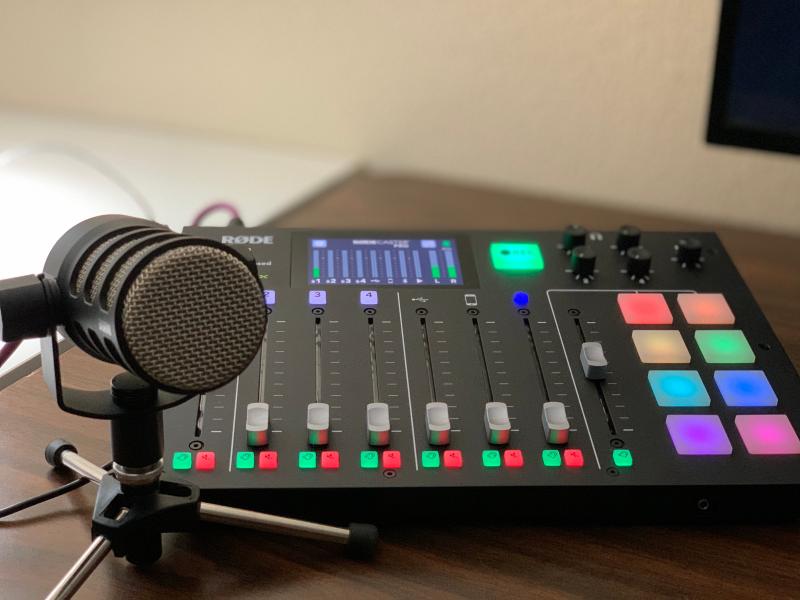


As an affiliate, I earn from qualifying purchases: The links below are, B&H Photo, Sweetwater, DVEStore, Perfect Circuit, or other affiliate links. Support my work creating videos by donating at. Our latest courses cover Sound for Live Streaming with the ATEM Mini and an Intro to Izotope RX.
Rodecaster pro 2 adobe audition how to#
If you’d like to learn how to make great dialogue audio for your film and video projects, please have a look at my courses including processing dialogue audio in Adobe Audition and DaVinci Resolve/Fairlight, recording sound, how to use the Zoom F4, F6, F8, and F8n, and how to get the most from the Sound Devices MixPre series of recorders.

In future episodes we’ll take a deeper dive into some of the specific features and use cases discussed here. Because this is a deep product, we’ll just scratch the surface in this video by giving you an overview of the feature set as well as walk through some sound quality and functionality tests. It’s also something of a real-time digital audio processor, sound pad playback device, 4-way headphone amplifier, livestream MIDI controller, and overall purpose-built computer.

This follow-up to the original RODECaster Pro is an ‘integrated audio production studio,’ as well as a user-friendly audio recorder and interface for streaming and podcasting. Selecting a region changes the language and/or content on this week’s episode, we have a look at the new RODECaster Pro II. Note: To use the Export with Adobe Media Encoder, you must have installed the same version of Adobe Media Encoder as Audition on your computer. When it comes to efficient compression, smaller file size, and better audio quality, a 64-kbps AAC-HE (high efficiency) stereo file would fare better than a 128-kbps MP3.Īudition gives you a range of output and encoding options within the application or outside, such as exporting to Adobe Media Encoder.Īdobe Media Encoder includes a series of formats and presets that allow you to render and publish high-quality audio output from Audition. For mono, podcast talks, 64-kbps MP3 is used. For stereo podcasts, 128-kbps MP3 is widely used. Recording your podcast at a higher encoding rate retains rich audio details. AAC also supports metadata that MP3 does not support, such as Chapter Markers, and embedded links and images. m4a files, offer better audio quality at smaller file sizes compared to MP3. MP3 is the most popular format used by podcasters. The most common formats for podcast delivery are MP3 or AAC. Importing video and working with video clipsĪfter you are done with your edits and previewing your changes, you can save your podcast in the format and settings that suits your target media.How to match, fade, and mix clip volume with Audition.Arrange and edit multitrack clips with Audition.How to use special effects with Audition.Diagnostics effects (Waveform Editor only) for Audition.Apply amplitude and compression effects to audio.Doppler Shifter effect (Waveform Editor only).
Rodecaster pro 2 adobe audition manual#
Manual Pitch Correction effect (Waveform Editor only).Fade and Gain Envelope effects (Waveform Editor only).Applying effects in the Waveform Editor.Analyze phase, frequency, and amplitude with Audition.How to automate common tasks in Audition.Inverting, reversing, and silencing audio.How to copy, cut, paste, and delete audio in Audition.Displaying audio in the Waveform Editor.Matching loudness across multiple audio files.Session Markers and Clip Marker for Multitrack.Edit, repair, and improve audio using Essential Sound panel.Remove silences from your audio recordings.Monitoring recording and playback levels.Navigate time and playing audio in Adobe Audition.Create, open, or import files in Adobe Audition.Customizing and saving application settings.Connecting to audio hardware in Audition.Applying effects in the Multitrack Editor.


 0 kommentar(er)
0 kommentar(er)
